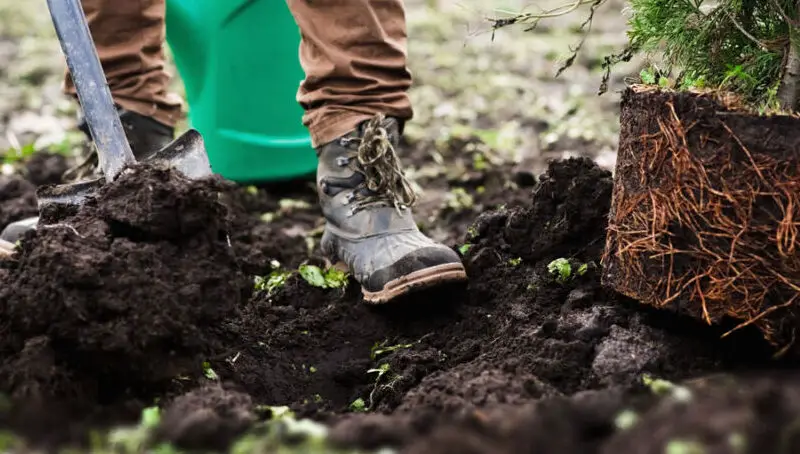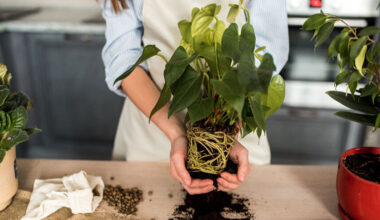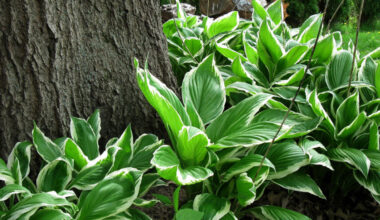Your maple tree is in the wrong place or has become too cumbersome and needs to be removed. Rather than sacrificing it, try transplanting it.
Contents
Can a maple tree be transplanted regardless of its size and age?
The larger or older a maple tree is, the more extensive its root system, and the lower the chances of a successful transplant.
Apart from the precautions to be taken during the transplanting procedure, two criteria are important to the success of the operation.
- The tree’s liabilities: a large tree that has never been transplanted (from seedlings in the field) has less chance of recovering than a tree grown in a nursery (one or more transplants), since the root system of the latter has developed in a more clustered fashion around the trunk.
- The vigor of the tree: a weak maple has less chance of recovering after a transplant than a healthy maple.
These two criteria are not prohibitive, but they do require that we be more rigorous during the various stages of the transplantation and in the maintenance that follows.
Preliminary work
Proceed preferably in autumn or in winter during the vegetative rest. Dig the new planting hole at least one week before transplanting the maple tree so that the soil settles properly. The hole should be slightly smaller in diameter than the branch of the maple and at least 25 inches deep depending on the size of the maple to be moved.
Be smart! If you are moving your tree only a few meters, dig a trench to its current location, this will avoid the hard work of extracting and lifting the maple.
When to transplant a maple tree?
With few exceptions, the best climatic conditions and soil quality necessary for a good transplant are met:
- from November to March (excluding periods of high humidity or frost) for deciduous trees. In cold regions, prefer the end of winter.
- in September or March, for conifers or evergreens.
- in May, for palms (to avoid the cold of the past winter and have plenty of time to settle in before the next one arrives).
Transplanting a small maple tree
Let’s start with the easy part: if it’s a young subject that is the size of a shrub or a not very big conifer, you just have to cut a root ball around the trunk, at a distance that allows you to integrate as many roots as possible inside.
Clear enough soil around it to create a kind of ditch that will allow you to have an easy access to the horizontal to insert the blade of your spade as well as possible, under the root system, in order to make traction.
Ideally, you should be able to get the root ball out without it breaking up or splintering, so that the roots remain in their “element” when the maple is replanted elsewhere.
How to transplant a large maple tree
There are 5 important steps to follow to ensure that a large transplanted maple tree is transplanted in the best possible conditions.
1. Circumference
This operation is done one to two years before transplanting, depending on the size and age of the maple, to spread out the trauma suffered by the maple over time.
It consists in forming the root ball and forcing the tree to produce roots close to the trunk, to compensate for the loss of the more distant ones that will be cut during transplantation, by carefully cutting the roots of the tree at a certain distance around the trunk.
This distance, which corresponds to the optimal diameter of the future root ball, is calculated in several ways: approximately one third of the height of the maple or 10 times the diameter of the trunk measured at 1 m from the ground.
During the ringing process, the future root ball is surrounded by wire mesh to facilitate its extraction and displacement at the time of transplanting.
2. The planting hole
Prepared one week in advance, it must be larger than the size of the root ball and the soil must be enriched with compost and organic fertilizer, as it is done during a classic plantation.
3. Reducing the volume of the crown
As the root system of the maple tree is reduced, the crown must be reduced as well in order to maintain the balance of the tree: it must be able to support itself; if the tree is cut off from part of its roots, it cannot continue to feed the whole crown.
4. The extraction of the maple tree
Extracting the maple and moving it is a very important step because it consists of handling the root ball without deforming it. Bounding the root ball with wire mesh made during the banding process will facilitate the task.
Tie up any branches around the trunk that might get in the way or break during the operation.
Dig a trench around the outside of the trench so as not to damage the new roots: remove the soil and cut the soil under the root ball with a spade. Move back and forth to lift the root ball a little at a time and cut off the roots that are still holding on until the root ball is transportable.
Remove the tree from the hole.
The larger the tree, the larger and heavier the root ball. At the very least, use a forklift and enlist the help of several arms to move the maple. At best, use a crane.
Note: the cohesion of the root ball depends on the root system of the tree but also on the nature of the soil. Be careful, especially if the soil is sandy.
5. Replanting the maple tree
Near the planting hole, remove the wire mesh that surrounds the root ball and install your tree in the planting hole. Proceed as for a classic plantation. Do not forget to install stakes in the planting hole. 3 to 4 stakes are necessary because of the size of the tree.









